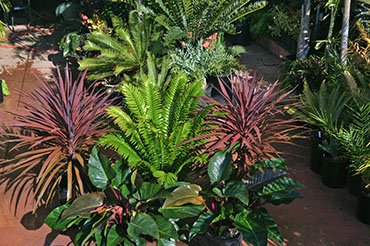
Vermiculite is widely used for growing plants as a soil amendment and when mixed with the soil. It improves heavy soil by providing better drainage and aeration and preventing soil compaction. Being considered as a permanent soil conditioner, vermiculite for plants lasts much longer than other common soil conditioners.
Vermiculite is Greate for Seed Starting
When vermiculite is used for seed germination or plant propagation, it takes a long time for particles to dry out so the root zone stays wet longer. There is a litter risk of root rot or damping-off. When transplanting, particles lets plants be pulled from the vermiculite without damage to the root systems. So, vermiculite is great for plant propagation or seed germination.

how to use vermiculite when planting seeds?
- Fill a shallow container with Pete Moss, or blend of 80% Peat and 20% Perlite or Vermiculite.
- Peat pots or special seed starting trays with drainage holes make transplanting easier.
- Wet the mix and allow it to drain.
- Plant seeds according to package directions. Please container and warm, bright location (avoid direct sunlight).
- Keep soil moist by misting with a spray bottle.
- When the plant develops its first leaves, transplant it into a larger container or outdoors in a prepared bed. Note: Dig seedlings out of their mix and handle with care to avoid damaging the fragile stem in the routing system.
Vermiculite for indoor potted plants
Vermiculite can be added to any indoor potting mixes for seed starting and long-term growth of plants, helping plants access and take up nutrients more easily. Vermiculite blended with potting soil mixes for vegetables and plants helps roots and soil retain optimal moisture for improved growth and vigor.
To improve heavy soil, mix one-part soil to one part Vermiculite. To blend your own potting media, mix two parts, Peat Moss, with one part compost, and one part Vermiculite.

Tropical Plants Soil Mixture
Tropical plants require a special soil for successful growing. You can mix it with peat moss, perlite, and vermiculite. Vermiculite helps to maintain moisture for tropicals and indoor plants that require consistent moisture while grown in more arid regions.

Ferns Potting Mixes Potting mixes for ferns
Ferns prefer potting soil with good drainage and high organic content. A good indoor potting mix is usually composed of peat moss, vermiculite and perlite. Peat moss holds moisture, perlite is key to good drainage, and vermiculite can hold up to 4x its weight.

Vermiculite for succulents
Vermiculite will lead to the robust growth of succulents, cactuses & other indoor potted plants as it will improve the soil aeration, help the roots to absorb soil nutrients, soak the excess moisture from the roots & keep the soil structure compact in the longer run.
Vermiculite for Root Cutting
Vermiculite is commonly used by those in the gardening trade to root cuttings. It can be used in various ways, either used alone, mixed with soil, or combined with bark for a soilless potting mixture. Whether used alone, or in a mix, propagating a cutting with vermiculite will promote anchorage for new roots, and speed up root growth. If you want to encourage a more rapidly rooting cutting and a higher propagation success rate, vermiculite is the preferred material to use.

How to Use Vermiculite for Cutting?
- Fill your container with Peat Moss, or a blend of 80% Peat and 20% Vermiculite, and wet the mix.
- Cuttings should be taken from healthy, disease-free plants, preferably from the upper part of the plants.
- Remove any flowers or buds when preparing to cut. Remove the bottom leaves leaving only two leaves near the top of the cutting.
- Make a hole with a pencil, gently insert the cutting deep enough for the nodes to be below the surface of the potting soil while the leaves are above.
- Firm the soil in the pot, water to settle the soil around the stems, and place the pot in a brightly lit spot, out of direct sunlight.
- Keep soil moist and out of direct sunlight until roots are developed and the plant can be transplanted.
Vermiculite or Perlite? Which One to Choose for Your Plants?
Vermiculite and perlite look similar and both retain moisture and both provide aeration for the roots of plants, however, they are indeed different. Let’s see what’s the difference between vermiculite and perlite, and configure which one you should choose for your gardening. Perlite vs vermiculite, which one is better for seed starting, which is preferred for root cutting. Check to see the differences between vermiculite and perlite.
Where to Buy Horticultural Vermiculite in Bulk?
MiningValeys is one of the leading manufacturers and suppliers of premium vermiculite for growing plants like seeds germinating, root cuttings, long-term growth of vegetables and plants.
For clients and customers who need to bulk buy vermiculite for gardening, vegetables, succulents, outdoor or indoor potting soil mixes blending, you can contact our expert sales via contact@miningvalleys.com. Or you can simply complete the form below and tell us your demands.
Premium Vermiculite for Plants Wholesale
- Origin: Lingshou, China
- Asbestos: None
- Color: Golden & Silver
- Type: Expanded
The following grades are supplied in either 50l, 100L/1000L/1500L bags.
- Finer Grade 1 (20-40mesh)
- Finer Grade 2 (1-3mm)
- Fine Grade 3 (2-4mm)
- Course Grade 4 (3-6mm)
- Course Grade 5 (4-8mm)










